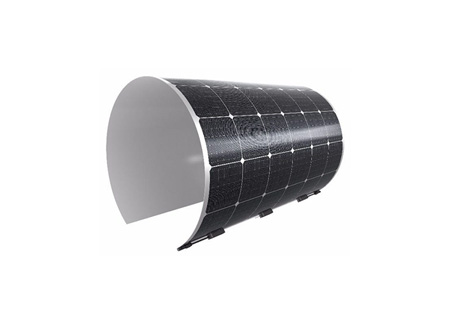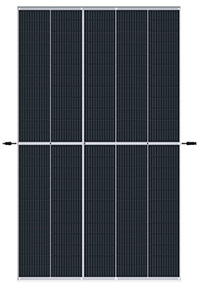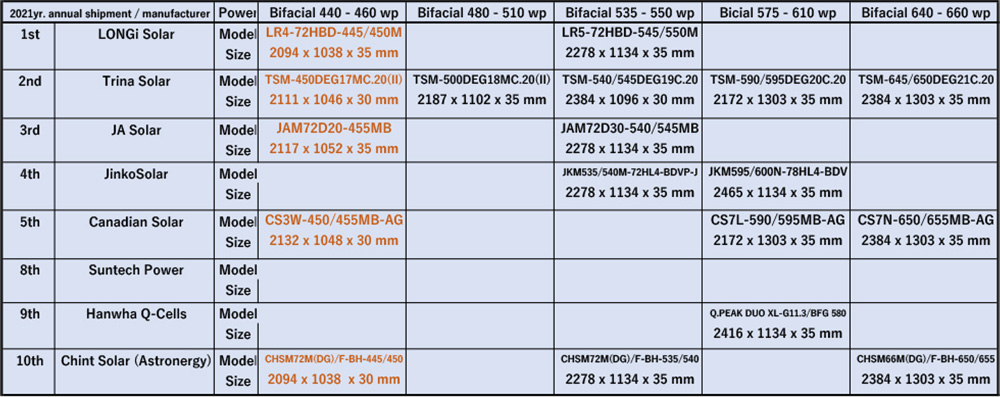PV column
Solar modules
2022/04/21
Current PV module size & power class

The size and nominal power of PV modules has changed significantly over the years. Due to the recent trend towards larger cell sizes (182 mm or 210 mm from 166 mm), there have been many changes in the size and nominal power of PV modules, and manufacturers have informed us that they are discontinuing production of modules using old size cells (156mm and 166mm).
Previously, PV modules were available in two popular types (60 cells/120 half-cut cells) and (72 cells/144 half-cut cells), and some manufacturers had a line-up of (66 cells/132 half-cut cells) (78 cells/156 half-cut cells) as well.
Based on the 2021 global PV module shipment ranking data, we summarized the models, nominal powers and sizes of PV modules from the largest eight manufacturers currently distribute in Japan as the below table.
The models and sizes highlighted in brown are not made by new size (182 mm and 210 mm) cells and they may be discontinued in 2022.
Modules for commercial & industrial application (back sheet type)
The lineups of PV module manufacturers are now available, 400 watts class modules as successor models based on module sizes equivalent to the previous 60 cells/120 half-cut cells, and 540-560 watts class modules made by large-size 144 half-cut cells as successor models of the previous 72-cells/144 half-cut cells.
In terms of roof load capacity and wind load, it appears that in many cases, modules up to 540-560 watts, mainly in the 400 watts class, are selected for self-consumption PV system on the roof. For utility scale projects in overseas markets, preferred to use larger panel sizes such as 600 and 650 watts have become mainstream, and are favored for mega solar projects in Japan.
Modules for commercial & industrial application (bifacial type)
Bifacial modules are basically supplied by manufacturers on an order basis, and sales of bifacial modules (440-460 watts) made by the old 144 half-cut cells are expected to end in 2022. Module manufacturers are shifting to 535-550 watts modules and 600/650 watts class modules for large scale projects.
Bifacial modules are also used in carports, Agri-PV (solar sharing), and floating-PV projects, etc. However, as bifacial modules become larger, the large bifacial modules need to select conformable floating system.
Modules for residential application
Many domestic and foreign PV manufacturers offer PV modules for residential application. The list includes three companies (Canadian Solar, Suntech Power, and Hanwha Q-Cells) that are in the top 10 in module shipment ranking and have established networks in the Japanese residential PV market, as well as residential modules from Panasonic as an example of a Japanese manufacturer. As the PV module size for residential application in Japan is smaller than the PV mainstream size, it is important to check available module’s nominal power and size due to changing cell size. For reference outside Japan, inquiries of residential PV system in Germany are increasing rapidly, and some companies are planning to install the PV system until the summer of 2023.

In addition to the PV modules for commercial & industrial, bifacial and residential application, unique specification modules such as lightweight modules (Canadian Solar), lightweight flexible modules (Sunport Power, etc.) are also available, and PV modules are expected to be installed in various applications and facilities.







